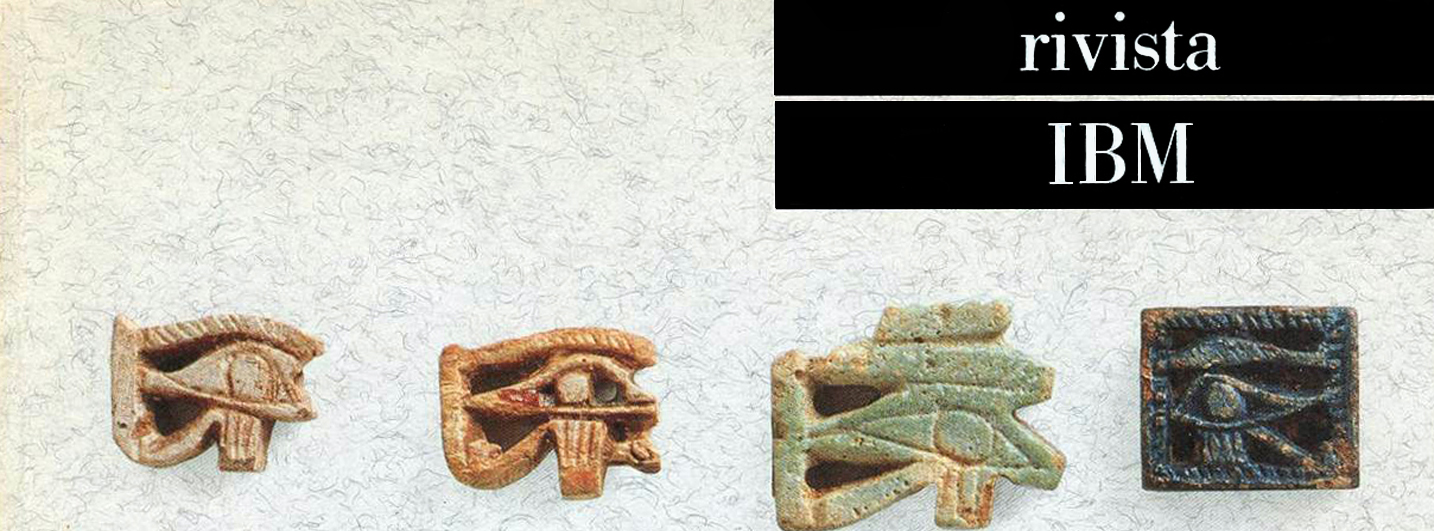
by Alessandra Caravale
On March 6, 1988, a large exhibition dedicated to the Phoenicians, sponsored by FIAT S.p.A, opened at Palazzo Grassi in Venice. In a presentation article published in the Rivista IBM, Sabatino Moscati, the exhibition’s scientific director, stated that the main purpose was not to set up “an” exhibition but “the” exhibition of the most important archaeological evidence of the Phoenician civilization in the Mediterranean. It was a great success (more than 750,000 visitors), thanks to the beauty of the objects exhibited and to the elaborate and inspired arrangement of the exhibition by the imaginative architect Gae Aulenti. Several suggestive reconstructions, such as the great dune of red sand that rose up to greet the visitors or the large pool of water on which ancient Phoenician vessels floated, as well as the quotations of classical texts painted directly on the walls with the casualness of graffiti, intermingled the geographical thread with “emergences” and “junctions”.
Another important innovation was the possibility to use interactive computer workstations, where visitors could consult educational programs specifically implemented by IBM Italia for this event. 12 personal computers PS/2 mod. 80, provided with 8513 colour monitors for texts and large screens for visualising digital images, were distributed in two large rooms. They allowed visitors to access four different interactive programs based on text descriptions, high-resolution images, computer graphics and simulation techniques.
These four “electronic itineraries”, as IBM defined them in a short brochure, illustrated historical and archaeological aspects of the Phoenician and Punic civilizations – from navigation techniques to commercial trade, from towns to daily life uses and customs – and were directed to people with different background levels: from schoolchildren to adults interested in more complex aspects of the Phoenician civilization. The experiment, which is generally recognised as one of first ever made in an archaeological exhibition in Italy, had almost the characteristics of a game, but was also intended to simulate the activities that archaeologists carry out to rediscover an ancient civilization.
The first program intended to give visitors a general overview of the Phoenicians. Users could select from eight main subjects (history of the Phoenicians and Carthaginians, customs, trade, etc.). Each of these topics opened with some questions: “Who were the Phoenicians?”, “Which is the origin of their name?”, “Is it true that the Phoenicians sacrificed children?”, “How Hannibal conceived the war against Rome?”. In this section the electronic simulation of the famous battle of Cannae (216 BC), in which the Romans were defeated by the Carthaginian army led by Hannibal, was also proposed. Visitors could also consult the maps of the Phoenician expansion in the Mediterranean sea, follow the routes of their oceanic explorations, and learn about their cuisine and typical dishes.
The second itinerary, “Discovery of a City”, was dedicated to Kerkouane, a trade centre, whose ruins had recently been brought to light. Starting with the topographical map of the archaeological area, users, aided by a series of clues, were expected to locate the boundaries of the ancient Punic city in the shortest possible time. It was then possible to move on the reconstruction of urban features and individual buildings.
The third program was dedicated to ships and trade and was meant to recall, in an interactive way, the role of the Phoenicians as brilliant navigators and merchants. It was focused in particular on Carthage, a prosperous commercial city which was equipped with a great harbour and a powerful naval fleet. Visitors had also the opportunity to participate in the excitement of an archaeological discovery. Once identified on the Cape Bon map the area where the ancient harbour was located, users could examine in detail the archaeological remains. For example, they could visit the building that contained the admiralty “offices”, or view axonometries and sections of the renowned Phoenician ships. The formidable and fast “pentera”, a warship capable of a battle speed of over six knots; the trireme, the “Lady” of the Mediterranean, that dominated our sea for more than two centuries and played a decisive role in several important battles of the antiquity, like Salamis.
The fourth and final program focused on archaeological artefacts. The Phoenicians were great manufacturers and exporters and they mostly used four raw materials: stone, metal, glass, and terracotta. Interactivity offered the opportunity to deepen the knowledge on techniques, tools and methods employed by the artisans for each of these four materials. Through the analysis of some sample objects, selected from more than 1,000 on display, visitors could concentrate their attention both on the manufacture procedures and on the most recent restoration techniques. It was just through the hands of the restorers that the sophisticated techniques used by Phoenician artisans were rediscovered, such as those for colouring glass objects. This subject – illustrated thanks to the technical skill of Studio Restauri Formica in Milan – was perhaps the most complex of the four, since it was aimed at presenting the technologies employed by ancient craftsmen with astonishing results.
IBM Italia implemented all the programs, under the scientific supervision of Piero Bartoloni, at that time Director of the CNR Istituto per la civiltà fenicio-punica. These electronic itineraries aimed at involving the visitor in the “revelation” of the Phoenicians world. They also supported one of the main aims of the exhibition: offering a new and more accurate view of the ancient Mediterranean, in which the Phoenicians were finally given their right place, and disclosing what in the ancient world was “different”, i.e. the anti-classic versus the classic, the breaking of the organic forms versus their cult among the Greeks and the Romans. The role of computers in the exhibition at Venice was therefore meant as a support of the visiting experience and as an educational entertainment, without giving it too much of emphasis in the catalogue and in the presentation videotape. It took only a few years before the discussion on the communication revolution in the Humanities broke out with great emphasis on methodological and technical implications.
VMAC – 2017